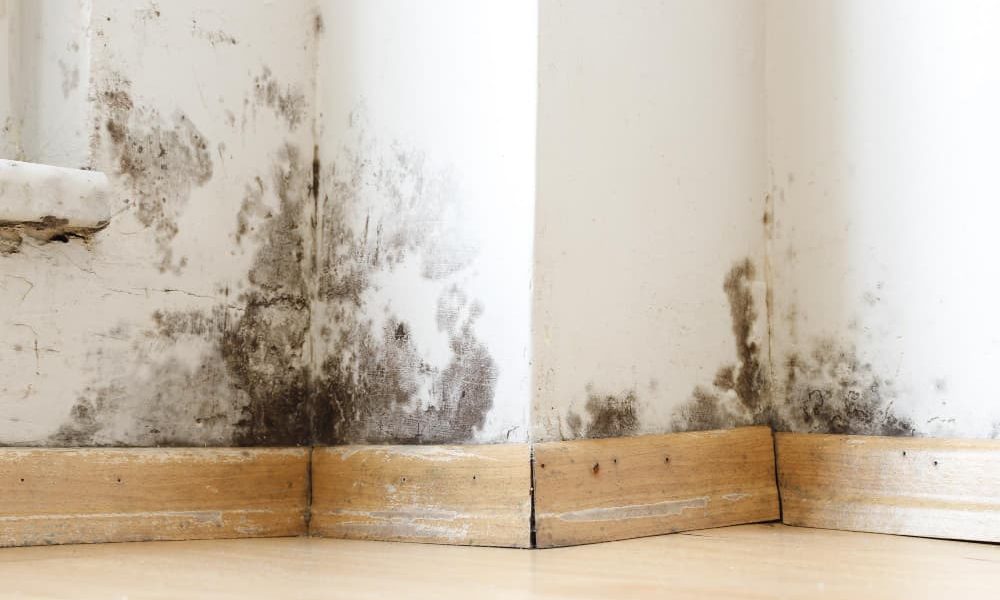Picture frames are more than just functional items to display photographs, artwork, or memories. They are extensions of our personal style and creativity. In recent years, there has been a growing trend toward using reclaimed wood for DIY projects, and picture frames are no exception. This choice isn’t just about aesthetics; it’s about sustainability, uniqueness, and craftsmanship.
When we talk about reclaimed wood, we’re referring to wood that has been previously used in old buildings, barns, fences, or furniture, then repurposed for new projects. Unlike fresh timber, reclaimed wood carries with it a story, characterized by its aged look, weathered textures, and rich history. Each piece is unique, meaning that no two DIY picture frames made from reclaimed wood will ever look exactly the same. For those who want a frame with character and personality, reclaimed wood is an excellent choice.
But beyond its rustic beauty, choosing reclaimed wood is also a decision rooted in sustainability. In a world grappling with the impact of deforestation and environmental degradation, upcycling old materials reduces the demand for new lumber. This helps preserve forests, decreases waste in landfills, and minimizes the carbon footprint associated with cutting, processing, and transporting new wood.
The cost factor also plays a significant role. Purchasing new high-quality wood can be expensive, especially if you’re opting for hardwood. Reclaimed wood, on the other hand, is often more affordable, especially if you source it from local salvagers, online marketplaces, or even from old items you no longer need, such as old wooden furniture. Plus, there’s a certain charm in repurposing materials that would otherwise be discarded, transforming them into something valuable and meaningful.
Additionally, reclaimed wood provides versatility in design. Whether you prefer a modern, sleek look or a vintage, rustic aesthetic, reclaimed wood can be adapted to suit your taste. Its aged appearance, natural imperfections, and weathered patina give it an inherent charm that is difficult to replicate with new wood. If you’re the type who values individuality and craftsmanship in home decor, creating your own DIY picture frame from reclaimed wood is a rewarding and fulfilling project.
Tools and Materials Needed
Before diving into the process of making your own DIY reclaimed wood picture frame, it’s essential to gather the necessary tools and materials. While working with reclaimed wood isn’t too different from working with new wood, there are some specific tools that will make the process smoother and more enjoyable.
Here’s a list of basic tools you’ll need for this project:
- Saw: A miter saw or handsaw will work for cutting the wood to size, but if you have a table saw, that’s even better. You’ll need to make precise cuts, especially at 45-degree angles, to fit the frame together seamlessly.
- Measuring Tape: Accuracy is key when it comes to cutting wood for picture frames. Make sure your measurements are spot-on to avoid any gaps or uneven joints.
- Sandpaper or Electric Sander: Reclaimed wood often comes with rough edges, splinters, or even old finishes. Sanding down the surface will help smooth it out and prepare it for assembly or painting.
- Hammer and Nails or Wood Glue: Depending on how you want to join the pieces of wood, you’ll either need small finishing nails or strong wood glue. Wood glue works well for a clean, seamless look, while nails can add a rustic, handmade touch.
- Clamps: To ensure your frame dries evenly and stays square while the glue sets, clamps are essential. You’ll want to clamp the frame tightly to prevent shifting as it dries.
- Paint or Wood Stain (Optional): If you want to customize the look of your frame, you can choose to paint or stain it. A stain will enhance the natural grain of the wood, while paint can give it a more contemporary finish.
- Wood Filler (Optional): If your reclaimed wood has holes or cracks that you want to fill, wood filler can help give your frame a smoother appearance. However, some people prefer to keep the natural imperfections for added character.
- Picture Frame Hardware: Once your frame is assembled, you’ll need hardware to hang it on the wall or stand it on a surface. Depending on the size and weight of your frame, this could include D-rings, hanging wire, or small metal tabs to hold the picture in place.
When choosing reclaimed wood for your frame, keep in mind that different types of wood have unique properties. Hardwoods like oak and walnut are durable and long-lasting, but they can be harder to work with due to their density. Softwoods like pine or cedar are easier to cut and shape but may not be as robust. However, any type of reclaimed wood can be used effectively with the right preparation.
A great source for reclaimed wood is old pallets, barn wood, or even discarded furniture. Thrift stores, flea markets, and online platforms like Craigslist or Facebook Marketplace can be treasure troves for finding old wood that’s perfect for upcycling. Be sure to check for nails, screws, or other metal pieces embedded in the wood, as these can damage your saw or tools.
Finally, don’t forget about the optional materials for decoration. You can keep the wood’s natural look or get creative with paints, stains, or finishes. Some people like to use a distressed paint technique to give their frame an even more aged appearance, while others prefer a sleek, modern look with a simple coat of varnish.
By following these initial steps and gathering the right materials, you’re well on your way to creating a beautiful, personalized picture frame that not only showcases your photos but also tells the story of its reclaimed origins. Whether you’re a seasoned DIYer or a beginner, this project offers a satisfying way to combine craftsmanship with sustainability.
Preparing the Reclaimed Wood
Before jumping into cutting and assembling your picture frame, it’s crucial to properly prepare the reclaimed wood. Since this wood has already lived a former life—perhaps as part of an old barn, furniture, or even a shipping pallet—it likely bears the scars of its previous existence. These imperfections give reclaimed wood its charm, but to ensure a sturdy and smooth picture frame, you’ll need to give the wood a bit of care and attention.
Step 1: Cleaning the Wood Reclaimed wood often arrives dirty, dusty, and possibly even covered in grime or old paint. The first step is to thoroughly clean the wood. Start by brushing off any loose dirt or debris with a stiff bristle brush. If the wood is especially grimy, a light wash with soapy water can help. However, avoid soaking the wood, as excessive moisture can cause it to warp or swell. After washing, allow the wood to dry completely before proceeding.
For wood that’s painted or varnished, you may want to strip the old finish. This can be done using a chemical paint stripper or by sanding. However, many DIY enthusiasts choose to keep some of the old paint, as it adds to the rustic aesthetic of the reclaimed wood.
Step 2: Removing Nails and Debris One of the downsides of reclaimed wood is that it may contain nails, screws, or other metal debris. It’s essential to carefully inspect each piece and remove any foreign objects before you start working. Use pliers to pull out nails or screws, and for smaller metal pieces, a nail punch can help drive them out without damaging the wood.
Failing to remove these hidden hazards can not only damage your tools but also compromise the safety of your project. Plus, it will be much easier to cut, sand, and finish the wood when it’s free from obstructions.
Step 3: Sanding the Wood Once your wood is clean and free from nails or debris, the next step is sanding. This is particularly important with reclaimed wood, as the surface is often rough, splintered, or uneven. Sanding will smooth out the wood and prepare it for cutting and assembly.
Start with a coarser grit sandpaper (around 80-grit) to remove the roughest spots, then work your way to finer grits (120-150 grit) for a smooth finish. If you’re using an electric sander, this process will go much faster, but even with manual sanding, you can achieve excellent results. Be sure to sand all sides, as this will ensure a smooth and polished frame once it’s assembled.
Measuring and Cutting the Wood for the Frame
With your reclaimed wood prepped and ready, it’s time to move on to one of the most crucial steps: measuring and cutting. The key to a well-fitted picture frame lies in the accuracy of your cuts, especially when it comes to the angles at which the pieces of wood will join together.
Step 1: Measuring the Picture or Artwork Start by determining the dimensions of the picture or artwork you’ll be framing. You’ll need to measure both the length and width of the image, taking into account whether or not you plan to include glass or a mat. It’s a good idea to add an extra 1/8 to 1/4 inch to these measurements to ensure the picture fits easily into the frame without being too tight.
Step 2: Marking the Wood for Cutting Using your measurements, mark the reclaimed wood where you’ll make your cuts. For picture frames, you’ll be cutting the wood at a 45-degree angle to create the classic mitered corners. A miter box can help you get these angles just right, but if you’re using a miter saw, it’s even easier to adjust the blade to the correct angle.
Ensure that the lengths of the sides match up perfectly so that the frame will come together squarely. The two longer pieces will be for the top and bottom, while the shorter pieces will form the sides.
Step 3: Cutting the Wood Now it’s time to make your cuts. Using a saw—whether a handsaw, miter saw, or table saw—carefully cut along the lines you marked. Be sure to follow the 45-degree angle guide closely, as even a small misalignment can cause the corners of your frame to look uneven. If you don’t have a power saw, a miter box and handsaw will work just fine for this task, though it may take a bit more effort.
Once all four pieces are cut, place them together on a flat surface to check that the corners meet snugly. If necessary, you can sand down any edges to achieve a perfect fit.
Assembling the Frame
With the pieces of your frame cut to the proper size and angles, the next step is assembling them. This is where your project really starts to take shape, transforming individual pieces of wood into a cohesive and functional picture frame.
Step 1: Choosing Your Assembly Method There are several ways to assemble your frame, depending on your personal preference and the tools you have on hand. The two most common methods are using nails or wood glue. Some people also choose to reinforce the corners with brackets or dowels for extra strength.
- Nails: If you prefer a rustic, handmade look, small finishing nails can add a charming, old-fashioned touch to your frame. Be sure to pre-drill small holes to prevent the wood from splitting when you hammer in the nails.
- Wood Glue: For a cleaner, more polished appearance, wood glue is a great option. Simply apply the glue to the ends of the wood where the pieces meet, then clamp the frame tightly until the glue dries. This method is strong and creates a seamless look.
Step 2: Clamping the Frame Regardless of whether you use nails or glue, clamping the frame while it dries is essential to keep it square and prevent the corners from shifting. Lay the frame flat on a table or workbench and use corner clamps to hold it securely in place. Leave the clamps on for several hours, or overnight, to ensure the glue has fully set.
Step 3: Reinforcing the Corners (Optional) For added stability, you can reinforce the corners of the frame with small metal L-brackets or wood dowels. This step is optional, but it can be particularly useful if you’re working with a larger, heavier frame or if the wood you’re using is slightly more brittle.
With these steps, your DIY reclaimed wood picture frame is almost complete. Taking the time to properly measure, cut, and assemble the wood will ensure that your frame is not only functional but also visually stunning, with each piece of wood contributing to the overall character and charm of the project. Next, you’ll move on to finishing touches that can elevate your frame from a simple DIY piece to a beautiful, handcrafted work of art.
Finishing Touches for a Professional Look
With the frame now assembled, it’s time to add the finishing touches to give it a polished, professional look. This is where you can bring out the beauty of the reclaimed wood and make your picture frame truly stand out. Whether you want to keep it natural or apply a decorative finish, there are several ways to enhance the appearance of your DIY picture frame.
Step 1: Sanding the Frame Edges Even though you’ve already sanded the wood prior to assembly, it’s important to give the entire frame another round of sanding after it has been assembled. This will help smooth any rough edges and ensure the corners are even. Pay close attention to the joints where the wood pieces meet—sanding them lightly can make the frame look more cohesive and polished.
Use fine-grit sandpaper (180 to 220 grit) for this stage to achieve a smooth surface. If you’re aiming for a rustic, distressed look, you can leave some of the wood’s imperfections intact, but for a more refined finish, make sure all surfaces are smooth and splinter-free.
Step 2: Applying Wood Stain or Paint (Optional) Now comes the fun part—adding color or finishing to your frame! If you love the natural look of reclaimed wood, you may choose to simply apply a clear coat of varnish or wood oil to enhance the wood grain and protect the surface. However, if you want to add a bit of color, staining or painting the frame can give it a unique, custom look.
- Staining: A wood stain will bring out the natural grain and texture of the reclaimed wood while giving it a rich, deep color. Stains come in a variety of shades, from light oak to dark walnut, so you can choose a tone that matches your decor. Apply the stain with a clean cloth or brush, wiping off any excess to ensure an even finish. Allow it to dry completely before proceeding.
- Painting: For a more vibrant or modern look, painting the frame can add a pop of color or create a distressed, vintage effect. Chalk paint is a popular choice for DIY projects because it adheres well to rough surfaces and creates a matte, antique finish. You can also experiment with techniques like dry brushing or layering colors to achieve a rustic, weathered appearance.
Step 3: Adding Protective Finishes Once you’ve stained or painted the frame, it’s important to protect the wood from moisture and wear. A clear varnish or polyurethane finish will provide a durable protective coat while enhancing the wood’s natural beauty or painted surface. Apply the finish with a clean brush, using long, even strokes. Depending on the type of finish, you may need to apply multiple coats, allowing each one to dry fully before adding the next.
For an eco-friendly option, natural oils like tung oil or linseed oil can be used to seal the wood while giving it a soft, natural sheen. These oils penetrate deep into the wood, nourishing it from within and providing long-lasting protection.
Attaching the Picture and Backing
Now that your picture frame is complete, it’s time to insert the photo or artwork and attach the backing to secure everything in place. This step will turn your frame into a functional piece, ready to be hung or displayed on a shelf.
Step 1: Cutting Glass or Plexiglass (Optional) If you want to add a glass or plexiglass cover to protect the photo, you’ll need to cut it to fit the frame’s opening. Measure the inside of the frame carefully and cut the glass or plexiglass to the exact dimensions. You can have this done professionally at a glass shop, or if you’re doing it yourself, make sure to use a glass cutter or utility knife (for plexiglass) and wear protective gloves.
Once cut, insert the glass into the frame, resting it against the inside lip of the frame. If your frame doesn’t have a built-in lip, you can use small clips or brackets to hold the glass in place.
Step 2: Inserting the Picture Place your photograph or artwork against the glass, ensuring that it’s centered and straight. You can also add a mat board around the picture for a more formal, finished look. Mats not only enhance the presentation but also protect the artwork from direct contact with the glass.
Step 3: Securing the Backing Once the picture is in place, it’s time to secure the backing. You can use a piece of sturdy cardboard or foam board cut to the same size as the frame. Insert the backing into the frame and hold it in place using small nails, metal tabs, or flexible points, which can be found at craft or hardware stores.
If you’re creating a larger frame, consider adding additional support by attaching a plywood backing for extra durability.
Step 4: Adding Hanging Hardware Finally, decide how you want to display your picture frame. For wall mounting, attach D-rings or sawtooth hangers to the back of the frame. D-rings are great for larger, heavier frames, as they allow you to string wire across the back for secure hanging. For smaller frames, a simple sawtooth hanger is often sufficient.
Alternatively, if you want the frame to stand on a shelf or table, you can attach an easel back or use a frame stand, which can be purchased at most craft stores.
Creative Ideas to Customize Your Reclaimed Wood Picture Frame
One of the best things about making your own picture frame from reclaimed wood is the ability to customize it to suit your style and creativity. Here are a few ideas to take your DIY frame to the next level:
Idea 1: Add Decorative Elements Reclaimed wood offers the perfect canvas for adding decorative touches that reflect your personal style. Consider embellishing the frame with small metal accents, such as vintage drawer pulls or corner brackets, to create an industrial or farmhouse look. You can also glue on seashells, beads, or other found objects to give the frame a more eclectic feel.
For a more natural aesthetic, try wrapping sections of the frame with twine, burlap, or leather strips. These materials complement the rustic charm of reclaimed wood and add texture and interest.
Idea 2: Experiment with Distressed Paint Techniques If you’re aiming for a shabby chic or vintage look, distressed paint techniques can help you achieve that worn, weathered appearance. Start by painting the frame in a base color, then lightly sand the edges and raised areas to reveal the wood underneath. You can also use a two-tone painting technique, where a second layer of paint is applied over the first, then distressed to reveal the underlying color.
Another technique is dry brushing, where a small amount of paint is applied with a nearly dry brush, creating a subtle, faded effect.
Idea 3: Incorporate Other Reclaimed Materials For a truly unique frame, try incorporating other reclaimed materials into the design. For example, you can use old metal or tin pieces as accents, or add strips of fabric, leather, or even recycled paper to give the frame a mixed-media effect.
You might also consider using colored glass or ceramic tiles to create a mosaic border around the frame, adding a pop of color and texture.
With these creative ideas, your reclaimed wood picture frame can become more than just a functional piece—it can be a true work of art that reflects your personal style and creativity. Whether you keep it simple or go all out with embellishments and decorative techniques, the beauty of this DIY project lies in the freedom to make it entirely your own.
Caring for Your DIY Reclaimed Wood Frame
Now that you’ve put in the effort to create a beautiful, one-of-a-kind picture frame, it’s important to ensure it stays in good condition for years to come. Caring for your DIY reclaimed wood frame is relatively simple but requires a bit of attention to detail to protect both the wood and your artwork.
Step 1: Regular Dusting and Cleaning Reclaimed wood has a naturally textured surface, and dirt or dust can accumulate in the crevices over time. To keep your frame looking its best, regularly dust it with a soft, dry cloth or a microfiber duster. Avoid using harsh cleaning products or water-based cleaners that can damage the wood or strip away finishes.
For deeper cleaning, a slightly damp cloth can be used to gently wipe down the surface, but be careful not to over-wet the wood, as moisture can cause warping or staining. If your frame has been finished with oil or varnish, a wood polish or oil can be applied periodically to maintain its luster.
Step 2: Avoiding Moisture Damage One of the biggest threats to any wood frame, especially reclaimed wood, is moisture. To protect your frame from moisture damage, avoid hanging it in humid or damp areas like bathrooms or kitchens. Excessive humidity can cause the wood to swell, warp, or even rot over time.
If you live in a particularly humid environment, consider applying a sealant to your frame for added protection. This will help create a barrier between the wood and the surrounding environment, keeping it safe from moisture and humidity.
Step 3: Checking for Wear and Tear Over time, even the sturdiest reclaimed wood frame may show signs of wear and tear, especially if it’s frequently handled or moved. Every few months, inspect the frame for any loose joints, splinters, or cracks. If you notice any damage, a small amount of wood glue or filler can often fix the problem.
If the corners of your frame start to come apart, reapply glue or use small finishing nails to reinforce the joints. Regular maintenance like this will help prolong the life of your frame and keep it looking beautiful.
Conclusion: The Beauty of Handmade Reclaimed Wood Frames
There’s something truly special about crafting a picture frame from reclaimed wood. Not only does it provide a beautiful, rustic aesthetic, but it also carries a deeper story—a history reflected in the wood’s grain, knots, and imperfections. Each frame is unique, with its own character and charm, adding a personal touch to your home decor that simply can’t be found in mass-produced frames.
By using reclaimed wood, you’re contributing to sustainable practices by reducing waste and repurposing materials that might otherwise be discarded. This DIY project not only offers a creative outlet but also supports environmentally conscious living. Whether your goal is to add a rustic element to your home, gift a handmade frame to a loved one, or simply try your hand at a fun, satisfying project, making a DIY picture frame from reclaimed wood is a rewarding endeavor.
As you finish your frame, you’ll likely feel a deep sense of satisfaction knowing you’ve transformed old, forgotten wood into a functional piece of art. The possibilities for customization are endless, from decorative paint techniques to incorporating other reclaimed materials. With a little care and creativity, your reclaimed wood picture frame will serve as a beautiful, timeless piece in your home for years to come.
Whether you’re a seasoned DIY enthusiast or new to the world of woodworking, this project is approachable, enjoyable, and offers the perfect blend of sustainability, craftsmanship, and personal expression. Your frame, much like the memories it will hold, will be a reflection of your own unique journey and style.







